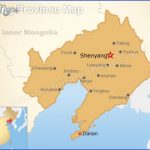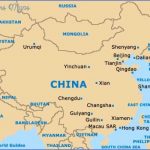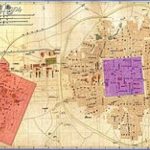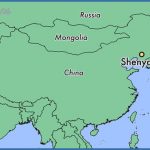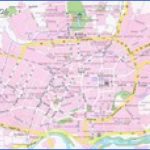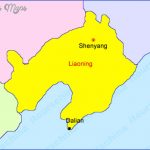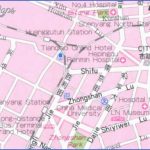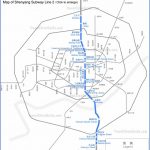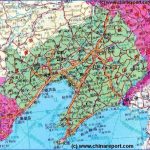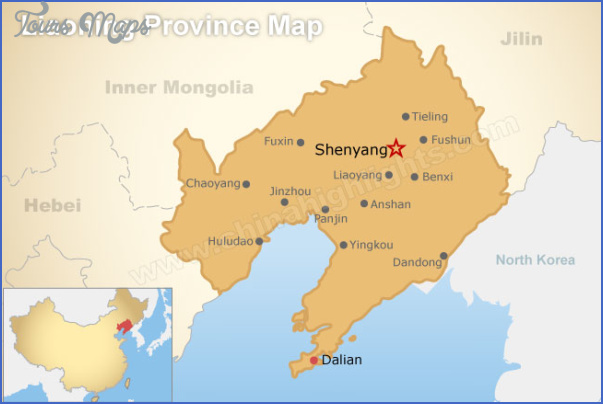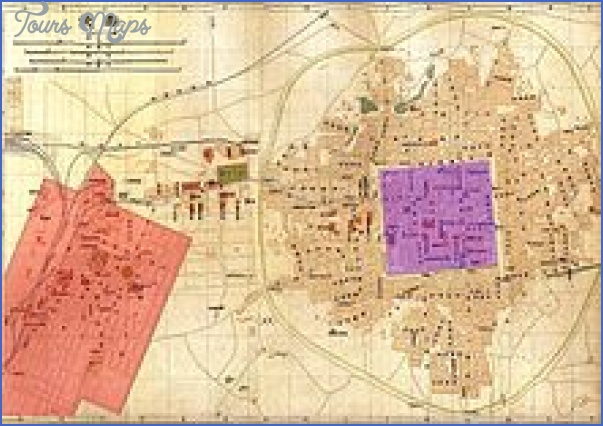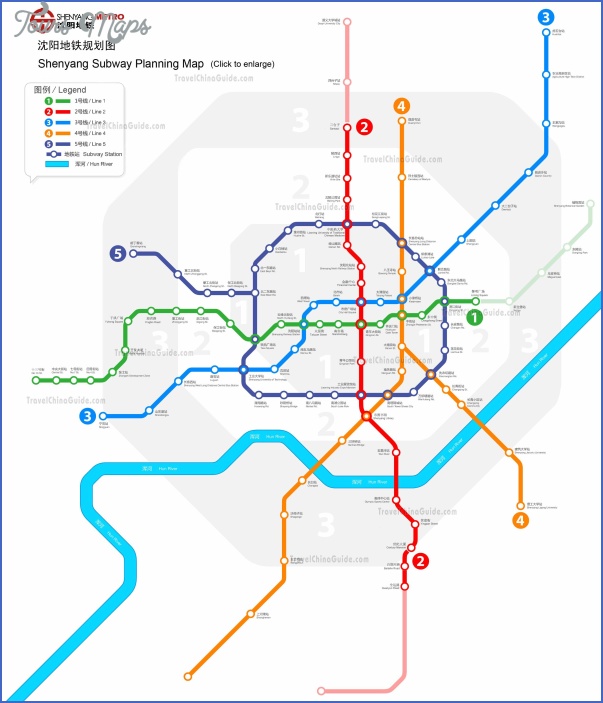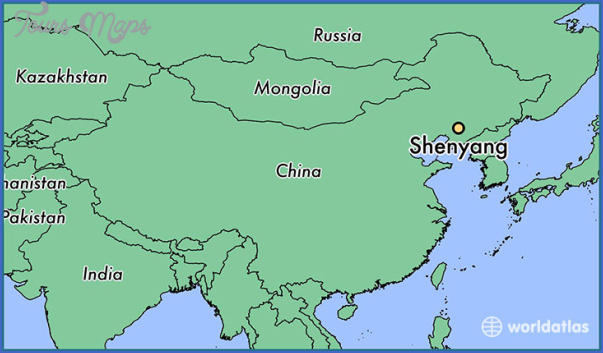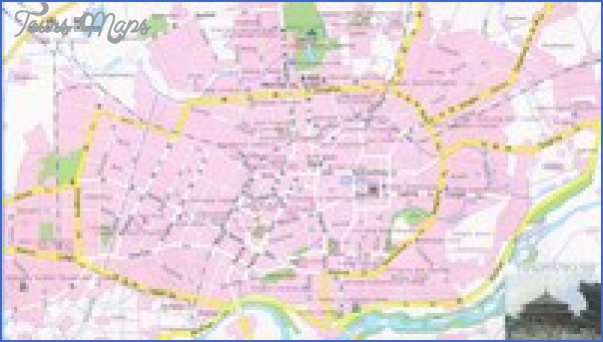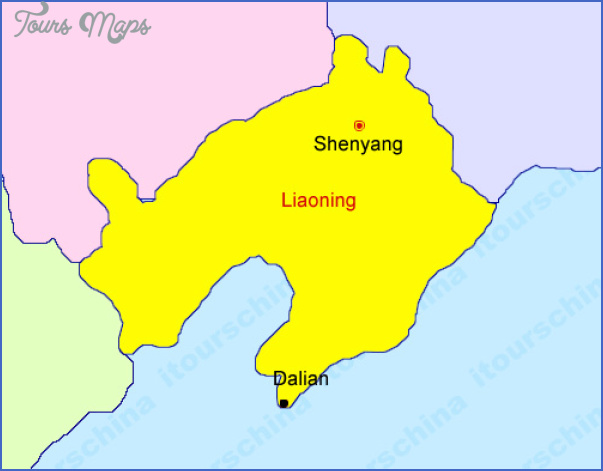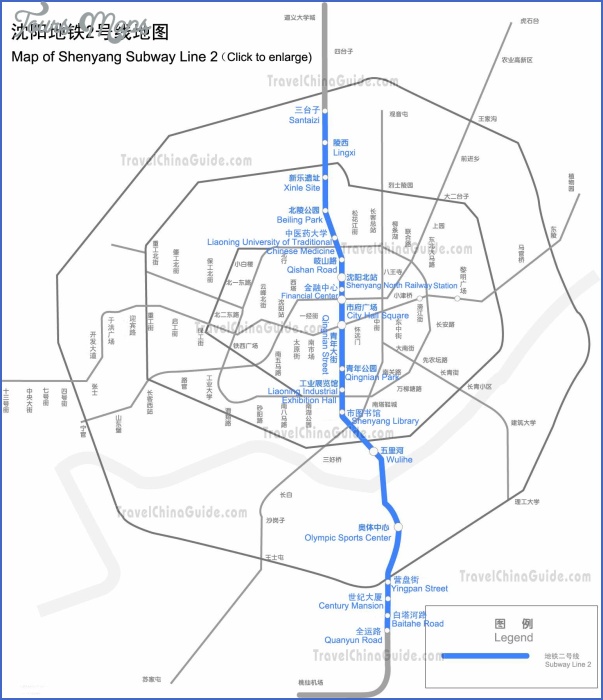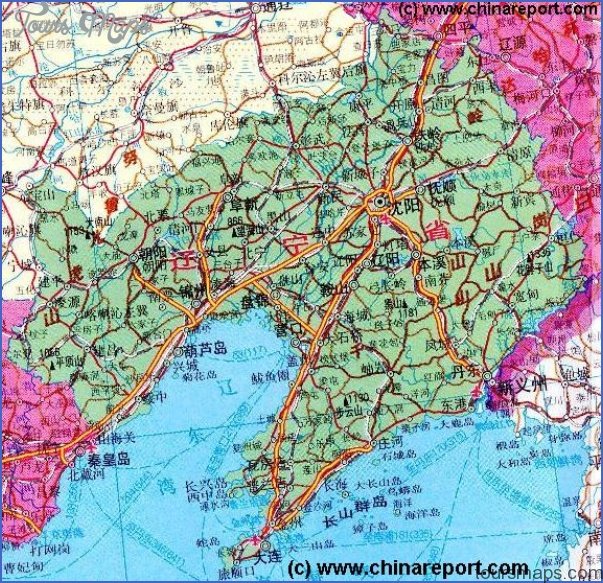Capital of the Liaoning Province
Altitude: 40m/131ft. Area: 173 sq.km/67sq. miles Population: 4,140,000 (conurbation 5,320,000)
Shenyang is situated in the centre ofthe Liaoning province at 123°24’E and 41°43’N. From Beijing it can be reached in 11 hours by train and from Tianjin in 9 hours; from the other main Chinese cities it can be reached by air. The city is connected with the port of Dalian by rail and a 375km/232 mile long motorway.
Shenyang is the most important centre for trade, industry and culture in the north-east of China. It is an important engineering centre and has chemical and textile works.
Over 2000 years ago, at the time of the western Han (206 b.c.-a.d. 24) Shenyang (under the name of Honcheng) was already one of the greatest cities in north-eastern China. It has been known under its present name since the Yuan era (1271-1368), perhaps because of the military importance it gained three hundred years before that as the stronghold of the Liao dynasty. Mukden is the Manchurian name for the city.
Between 1625 and 1644 Mukden was the Manchurian seat of government of the Qing dynasty which ruled the whole of China from here. Towards the end ofthe 19th c. it came into the sphere of influence of Russia, although the city and southern Manchuria had to be handed over to the Japanese following the defeat near Mukden in 1905.
The murder of a Japanese General in 1931 was the cause of the so-called “Mukden incident”, which ended with the Japanese occupation of the whole of Manchuria. Japanese foreign rule lasted until 1945, when the Russians declared war on Japan and took Shenyang. After they had exploited the south Manchurian minerals, the new occupiers dismantled the industrial sites. In 1948 the city was captured by the communists.
The magnificent and imposing 60,OOOsq.m/71,760sq.yd Imperial Palace, dating from the the early Qing era, is situated in the east of Shenyang. It is, after the Imperial Palace in Beijing, the second largest completely preserved palace complex in China. The building work took over ten years to complete (1625-36). The complex served as an imperial palace to both of the first Qing emperors, Nurhachi (1559-1626) and Huang Taiji (1592 1643). The palace complex includes several courtyards, around which are grouped numerous buildings, and is separated into eastern, central, and western sections.
The Hall of Exaulted Government, built before 1632, is the centre of the middle section and houses the imperial throne and a screen with a gilded dragon as a bas-relief. It served as the audience building to the second Qing emperor Huang Taiji, and was also used for carrying out daily business.
The three-storey PhoenixTower(1627) behindthe Hall of Exaulted Governments was used for banquets.
Shenyang: detail in the Imperial Palace
The adjacent Palace of Clarity and Rest, built in 1625, housed the imperial couple’s sleeping chambers and sacrificial rooms.
The Pavilion ofthe Source of Culture in the rear section ofthe western wing functioned as the emperor’s private study. The only complete edition ofthe Siku Quanshu, a Chinese encyclopedia which appeared in 1772 in only seven editions, was previously kept here.
Situated at the far end of the eastern wing, this is the oldest palace building and dates back to the early 17th c. Although the octagonal building is reminiscent of a nomadic tent, the building otherwise reveals many features of Chinese architecture. Held here were the most important ceremonies concerning the emperor.
In the Ten Princely Pavilions, which are set in two rows in front ofthe Hall of the Great Government, were the offices and reception halls of the ten leading princes of the Qing era, those of the princes of the right wing, the princes of the left wing, and the eight banner commanders who led the Qing army. Some of the buildings in the complex house the palace museum.
Also known as the “Mausoleum of Light” (Zhaoling), the northern tomb is a popular place with day visitors. It is situated in the north of the city in the middle of a park. The architectural style represents a successful combination of the traditionally arranged Chinese burial sites and the castle-like buildings of the early Qing period – a masterpiece of an amalgamation of Han and Manchurian art. Buried here is Huang Taiji (reigned 1626-35) and his wife. The building work on the 180,000sq.m/215,280sq.yd tomb site was begun in 1643 and completed eight years later. It is the best preserved and largest of the three imperial mausoleums in and around Shenyang.
The “Path of Souls is lined with stone columns and two stone sculptures of horses, depicting the emperor’s two favourite animals.
In the largest steam engine museum in China various types of steam engines are displayed in an area of barely 10,000sq.m/11,960sq.yd. The engines date from the beginning of the century to the 1950s, and come from several countries. Visitors can ride on one ofthe engines and view a locomotive and waggon factory, and a rail service headquarters.
The Eastern Imperial Tomb, also known as the “Mausoleum of Good Fortune” (Fu Ling), lies on a hill 11 km/7 miles to the north-east of the city. It is the resting place of the first Qing emperor Nurhachi and his wife. The necropolis, built between 1629 and 1651, covers an area of 194,800sq.m/232,980sq.yd, the style ofthe structure corresponding to the Northern Imperial Tomb. The beautiful scenic surroundings add to the particular charm of the monument.
Some 20km/13 miles south of the the city is the battle field of Mukden, where the decisive fighting took place in the war between Japan and Russia (February 25th-March 10th 1905).
The Russian army, under the command of General Kuropatkin, consisted of the First Army under General Linewitsch on the left flank, the Second Army under General Baron Kaulbars on the right flank to the west, and the Third Army under General Baron Bilderling in the centre. In all there were 310,000 men with 1100 guns. Their strongly established position was about 150km/93 miles long and about 20-25km/12-15 miles wide.
The Japanese forces, under the command of Marshall Oyama, had dug themselves in deeply opposite the Russian position. They consisted of five armies: the First Army under General Kurok, the Second Army under
General Oku with reserves, and the Fourth Army under General Nodzu in the centre, the Third Army under General Nogi on the right flank to the west, and the Fifth Army under General Kawamura on the right wing to the east. In total there were 300,000 men at the most, with 892 guns. The front was about 80km/50 miles to 100km/62 miles wide and about 30km/19 miles to 50km/31 miles deep.
Towards the end of February 1905 the Japanese attacked the Russian left flank, simultaneously their Third Army began to surround the Russian right wing. Until March 1st 1905 they achieved no particular advantage, then the Russians were forced back even further, On March 7th 1905 Kuropatkin admitted defeat, and ordered a retreat, which partly degenerated into a rout.
The losses to the Russian amounted to over 87,000 men, of whom 29,000 were taken prisoner; the Japanese lost an estimated 67,000
Shenyang Map Photo Gallery
Maybe You Like Them Too
- The Best Cities To Visit in The World
- World’s 10 Best Places To Visit
- Coolest Countries in the World to Visit
- Travel to Santorini, Greece
- Map of Barbados – Holiday in Barbados

